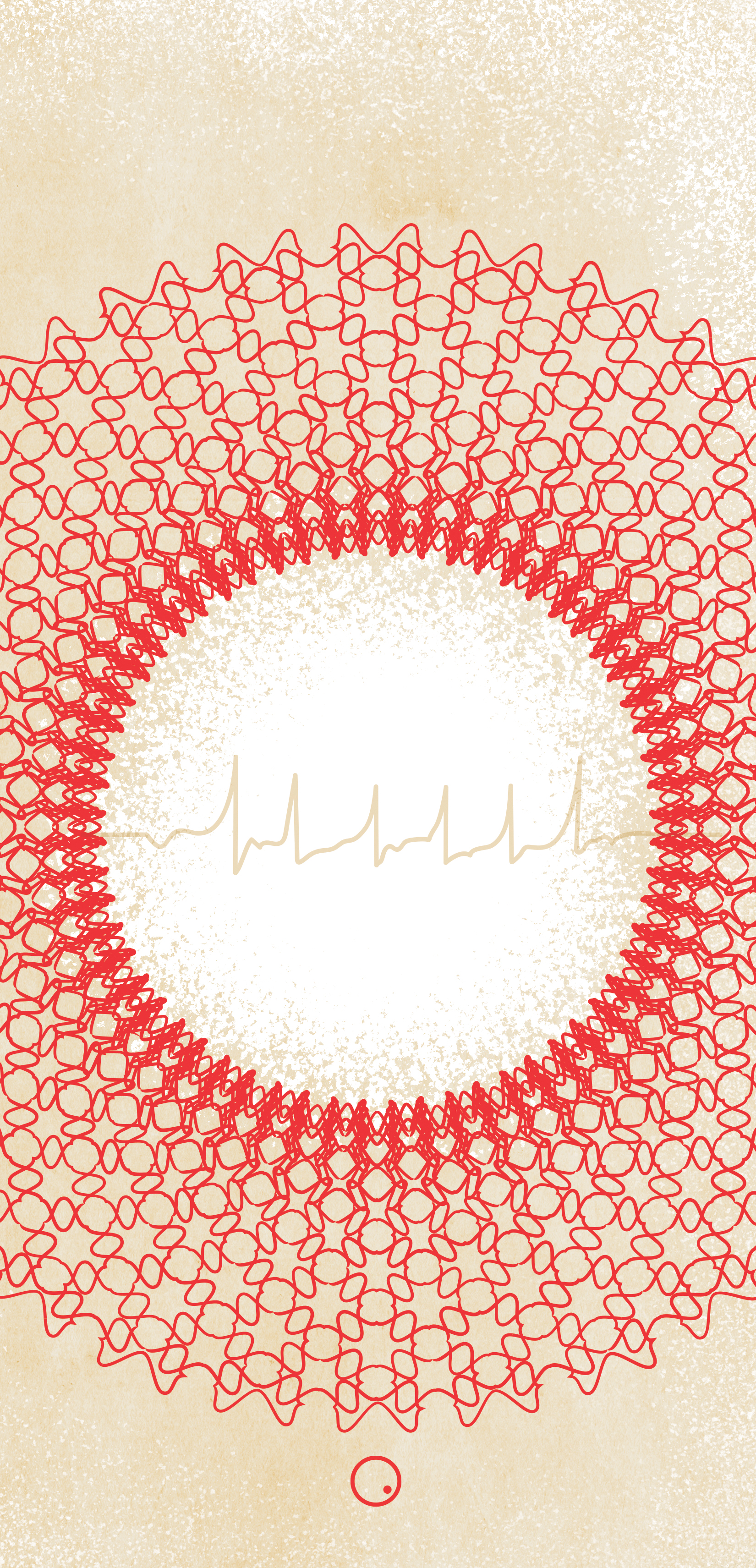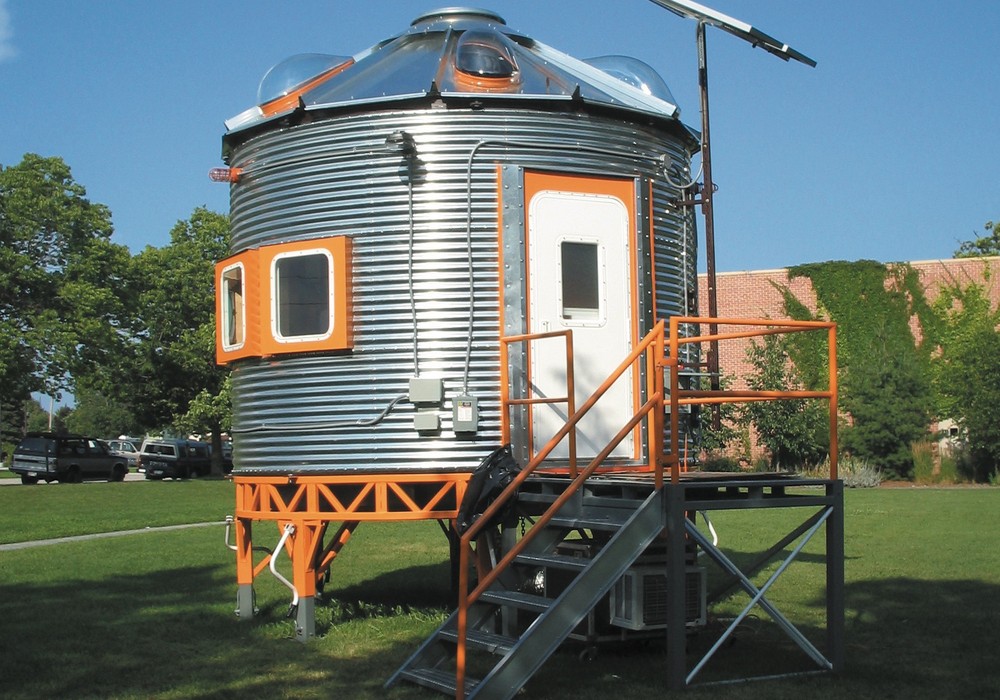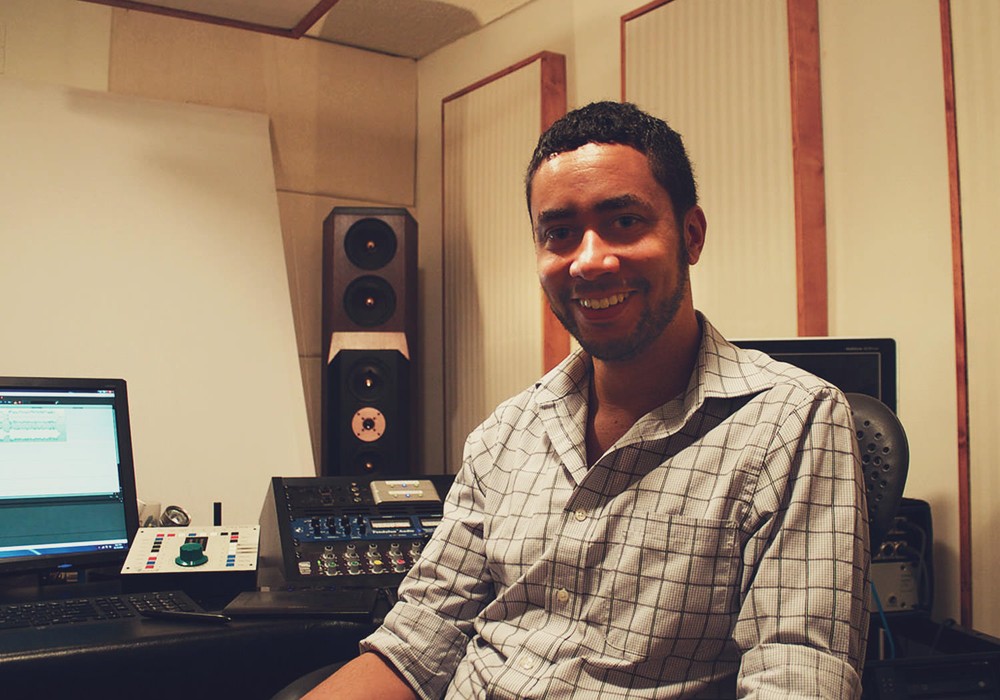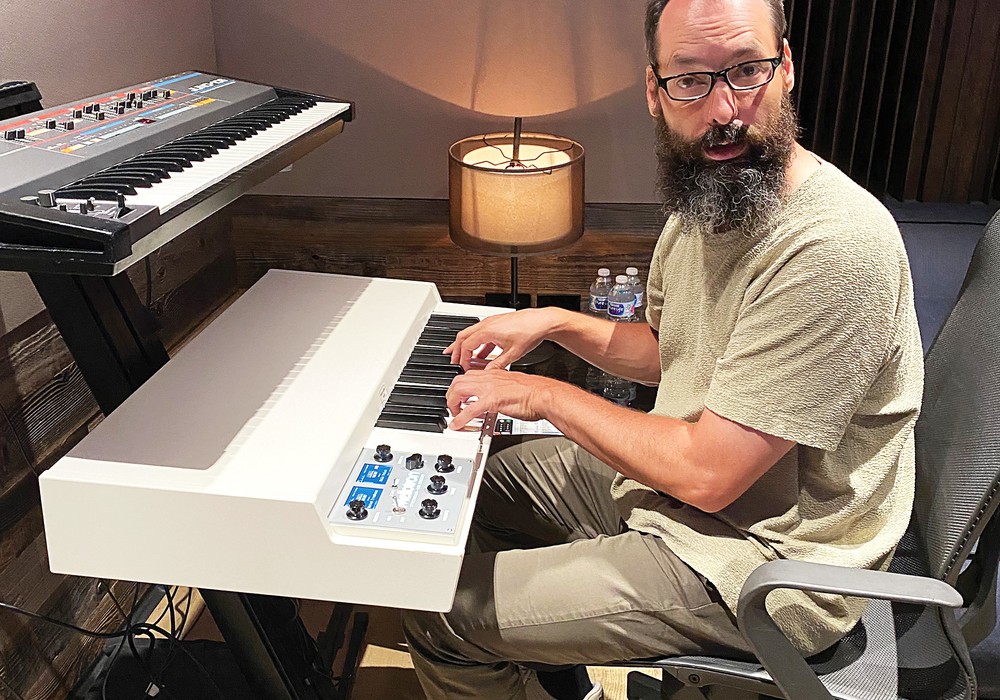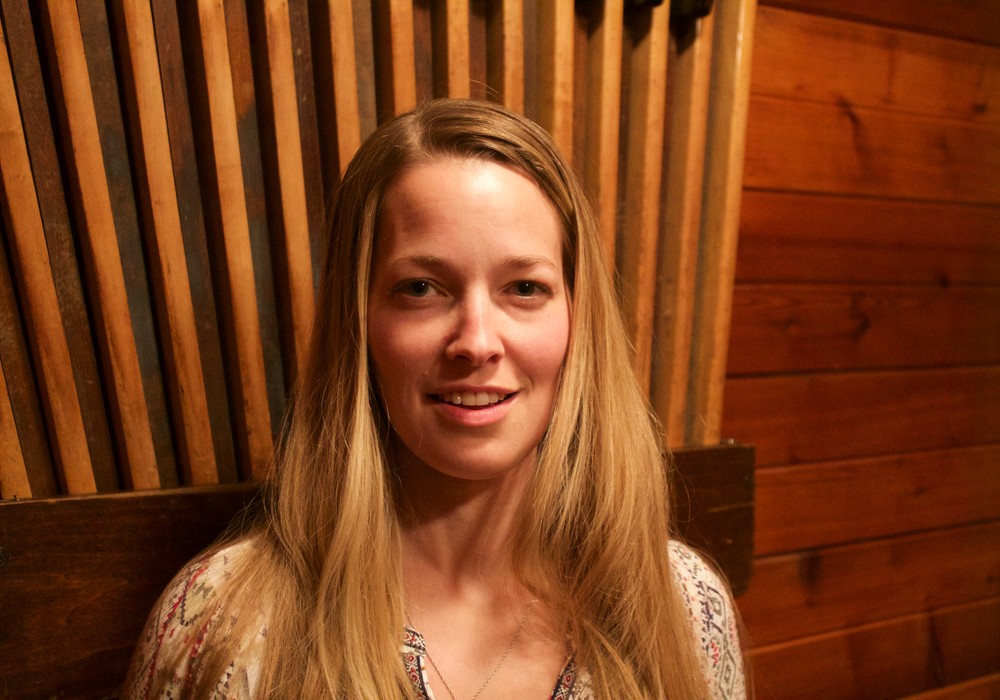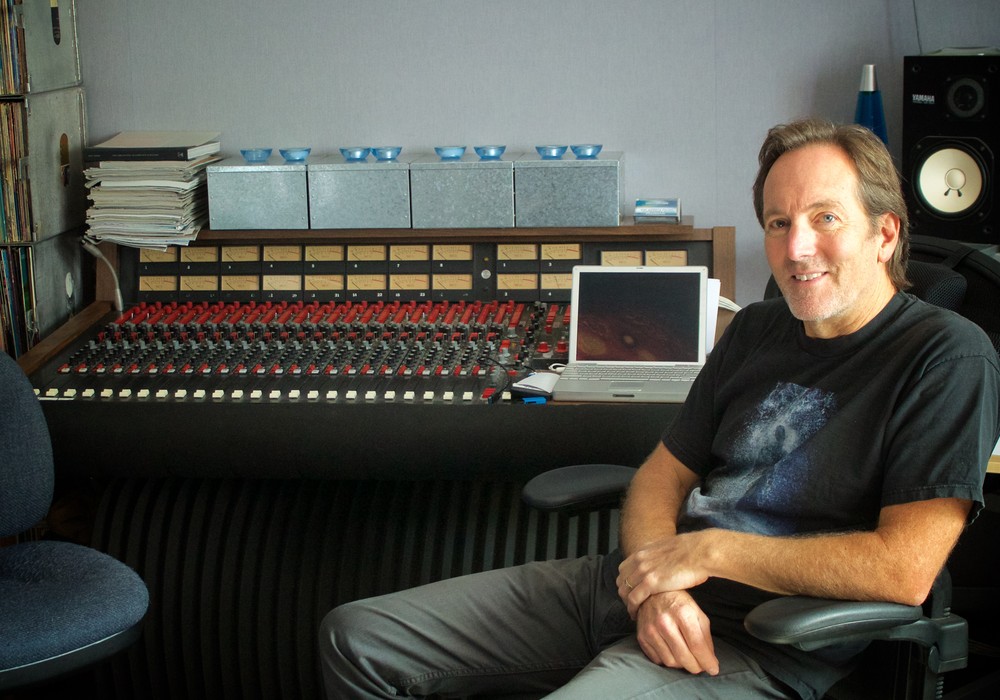About one hour from Christchurch, New Zealand, the small village of Mount Somers is located just before the steep and pristine beginnings of the beautiful Southern Alps. A green, mostly farming-dominated district, it's also home to Peter King of King Records Worldwide — a truly unsung ally to the world of self-recorded, self-released, and otherwise independent music. He has been cutting records for musicians far and wide for over twenty years now, and still carries out all the daily duties of this one-man operation himself. After relocating from his old address in Geraldine, another alpine gateway further along to the south, Peter is soon to finish construction on his own idea of a dream house, with all its customized additions — all by himself.
I was able to visit Mt. Somers recently and check out Peter's arcane magic for myself. It also worked out that by bringing down some tracks of my own, I was able to put to rest a long-running project, and also get first-hand experience at King Records. I had spent the two days before my arrival airing my head out on the South Island's West Coast, after finishing a series of sessions at a studio in nearby Christchurch. Returning to Mt. Somers through the massive wonders of the Alps via Arthur's Pass National Park, I soaked in the many surrounding ranges that tower over the route to Peter's house. Before going down to New Zealand, I had not heard more than vague and passing mention of his work. Yet like many of those I know, I surely would have had some records made long ago, if I had know of his unique services.
After four years running a successful studio at home, Peter began to tinker with his two vinyl cutting lathes in the late '70s. He had gotten the machines from a TVNZ facility that was closing down in Christchurch. While working there as a session drummer doing jingles, he'd noticed in a back room what he first thought were old sewing machines. It turned out that in a way, these pieces of furniture-sized audio equipment did indeed sew threads -ones made of sound. With a series of basic but very well-implemented motor and housing modifications, he tailored the lathes to his own purposes. Peter changed belt materials, power supplies, drive motors, and, most importantly, began the search for a material best suited to his lathe cuts.
His first few trials began more than twenty years ago, with nitrocellulose lacquer sprayed on aluminum discs, and moved through a variety of different plastics, including Perspex, Plexiglas, and polypropylene. Peter had continued to experiment in constant response to earlier clients' feedback about their finished records. Initial concerns about fast wear and its resulting loss of clarity were solved by both a more durable material and by changing the angle of the lathe's cut. This was a key improvement, Peter tells me, put in place after an insightful conversation by telephone with Rainbo Records' owner in California. Now he's settled on cutting masters to a material that's in the polycarbon range of plastics. Its clear, see-through look combined with a full-color label in the center is instantly visual appealing. Over the years, all of these changes and developments have added up to a growing fidelity and precision in Peter's end results, and the experience shows when you see him at work. So with a sunny Saturday ahead of us, we began this not-so-typical cutting job.
Things go in circles inside the cut factory. The four custom-modified lathes spin 'round continuously, providing a hum which fits both the setting and the work at hand. His smooth pace seems always to be attendant on the sonic results worn by a finished side. The countless hours Peter has logged inside his shop cutting discs have resulted in a systematic process through which each order comes to pass. He shows me around the plant, and explains each small station he's set up for himself: one to size and remove the discs from their square stock plates, one to drill-press the centre holes, a polishing area, a place to cut and prepare labels and finally a shipping and receiving table. Masters come to the King plant mostly as CD-R burns now, but sometimes on DAT or even cassette. EQ tweaks before cutting were once done to each individual job, but now Peter much prefers keeping his settings locked, and to have all mastering done before the project is sent. Basic limiting is provided via an Alesis MicroLimiter, though mainly as protection for his own gear's sake, as many projects sent are often not already mastered.
By this point, the bright South Pacific sun had filled the room, highlighting the lathes and gear with color and contrast, as we look at his system more closely. Outs from the 2-track players pass through a small Holden mixer from Australia, which Peter chose for its low noise floor. Audio signal then flows on towards the cutter heads, first hitting a pair of lamp fuses. This safety tip of sorts was recommended by a woman in New Jersey, and prevents overloads of heat from building up at the head. I laughed as Peter described a DJ's demands for the hottest cut possible, which brought smoke pouring out of the lathe's frying head unit. Peter tells me he can't afford any more fire-inducing overloads from here on out, as the cost of replacing these heads is close to $20,000 U.S. Of the four lathes Peter runs, his first two are of BBC origin and use a British EQ curve, which gradually eases through the frequency spectrum. Starting with severely cut low-end, it passes in a diagonal on his UREI multiband, moving through a flat midrange, then to boosted high-mids and high frequencies. The second pair of machines are customized hybrids, with modifications based on American specs. Their curve leaves the low-end untouched and slightly lifts the hi-end. He describes their sound as being more modern and hot. The biggest difference between King Records and an actual pressing plant using black vinyl is the fact that each disc is individually cut by these lathes that were once used for making pressing masters. Tonally, regular black-vinyl records have more accurate and detailed high frequencies, but — as if affirming the physicality of Peter's system — his discs reproduce a deeper and punchier low end. All four machines run together at the same time, making the final batch of discs an even mix of the subtle coloration from both types of machine. This doesn't bother the majority of his customers, however, who are often already experimenting or on the fringes anyway. Magic is not an exact science. Despite numerous cuts for New Zealand groups from around both islands, Peter's work seems to now be done mainly for people outside of New Zealand. I noticed other orders having come from places like Japan, Holland, England, Australia, Finland and Germany. But for all his devoted customers, I am surprised at how little reputation he still carries inside the US.
Saturday afternoon continued to spread itself out across the green flats and surrounding peaks of Mt. Somers and Mt. Hutt. Now we were ready to start the process live, making 25 10"s from my CD-R source. Before a plate is ready to be cut, both sides are given a clean and polish. Not only must the disc be lubricated with wax, but it also gets warmed at the cutting platter by a low-lying heat lamp, which helps its surface become more malleable for the cutting needle. After checking my master's output level with his two unassuming metering sources, a bypassed stereo comp/limiter and an ordinary '80s hi-fi amp, he sets his sends going to the lathes. With such tank-like cutting systems, the safety from skipping or mis-tracking is not an issue, but distortion is not as easy to get away from. During cutting itself, Peter stays keenly aware of what each machine's platters are doing, watching for any slippage or irregularities in their movement. After doing so many records he seems to have a sixth sense for this already built-in. It's this careful attention to detail that has stuck in my mind when I think back to this visit. Disc format sizes include the standard 7-, 10- and 12-inch formats, but Peter makes an 8" as well. This extends a 45 rpm 7" to six-minutes per side instead of its usual five-minute time cap. It's helpful to gain this extra bit of time without having to slow down to 33 1/3 or change sizes. Also interesting are his shaped discs — squares, saw-blades, and triangles — and the picture disc samples that he showed me. Each cut is spun out to the label's edge or lock-grooves are possible instead.
As we moved steadily through the batch we planned to finish, Peter shared tales from his days racing Christchurch's local boy-racers in his '67 yellow and black Ford Mustang — yet another defining feature of a guy who doesn't stick to the ordinary. After both sides have been cut, and each finished set of four comes off the lathes, they fall into neat stacks on a nearby table, where the center labels are then later applied carefully by hand. Finally, as a quality control measure, Peter checks the playback of certain records, chosen chronologically from the now completed order. By listening to quick bursts on his turntable, he can double-check that things have stayed consistent throughout the cutting. The main reason behind this is that each cutting needle can only wind out between twenty-five and thirty discs on average before having to be replaced. Hunched over the fresh disc, he drops the tone arm into a few sections of each side, while manually slowing and stopping the platter with his hand. Here he seemed almost as a blind man reading braille, feeling the texture of the grooves themselves. King Records is now the sole remaining record-cutting facility still operating in New Zealand. This is, ironically, due to the foolish and infamous disposal of Radio NZ's pressing machines into the Cook Strait in the late '70s. That tragic loss of Neumann lathes and high-end master cutters is now considered almost criminal by many New Zealanders in the audio field. His early discs have been in gallery exhibitions and are considered collectors items by those in tune with Peter's craft.
Part of the ongoing obscurity of King Records could be due to its remote location on the map. Information about these lathe cuts usually circulates by word of mouth, as Peter has advertised in very few places over the years. He plans to have a web page set up at some point soon, but for now he appreciates the help of a California-based site, which has his contact information listed, along with a partial discography of past collectables. Yet even without all of the things that we now believe necessary to a modern business, Peter continues to stay busy. He uses phone and fax to keep in touch with the world, and for now it's doing the job. After seeing the time and attention given to just twenty-five discs, I can now truly appreciate what it takes for Peter to tackle an order of over 200. As they say, I've been nothing but chuffed with these records' warm tone and novel look. So cheers to Peter down in the antipodes.
Peter King Record Manufacturing
35 Comyns St., Mt Somers 1 RD, Ashburton, South Island, New Zealand, Phone/Fax: 64 3 303 9755,
Cell phone: 64 25 623 5389
